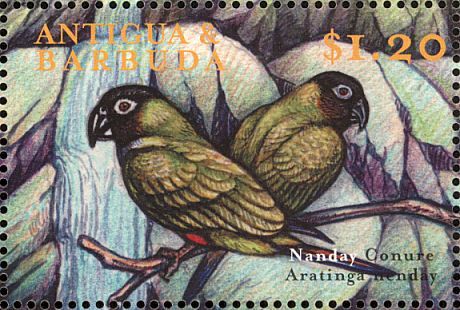At the time, I had no idea what kind of bird this was, so I posted the photo to nextdoor.com and asked neighbors for help in identifying.

Nanday conures/black-hooded parakeets spotted this week near Azalea Park.
There were a lot of responses, many were not accurate based on the coloring. It's not a monk parakeet or a Quaker parrot (two names for the same bird), not a lorikeet nor a wild green parrot. But many neighbors correctly identified the birds as nanday conures, which I was able to verify by comparing with other photos on the internet. Nanday conure is the preferred name in the birding community, black-hooded parakeet is another name for the same bird.
According to Wikipedia, "the species is native to South America from southeast Bolivia to southwest Brazil, central Paraguay, and northern Argentina, from the region known as the Pantanal. Caged birds have been released in some areas, and the birds have established self-sustaining populations in Los Angeles, California, San Antonio, Texas, and several areas of Florida."
Nandays were first observed in Florida in 1973, almost certainly freed or escaped pets. Today there are numerous colonies in St. Petersburg.
These birds live to be about 20 years old. They are intelligent and charming. In captivity they can learn as many as twenty words and they will mimic microwave and ring tone sounds.
Wild Nanday Parakeets In St Petersburg, Florida Near Pass A Grille Beach:
The beautiful and beloved birds are frequently featured on stamps:
When I photographed the nanday conures in my backyard, they were on a powerline that is directly over a Brazilian pepper tree. Perhaps they instinctively found something familiar and comfortable about that Brazilian tree in the Jungle. I hope to see them again in the near future.
_____________________________________________
Sources for this article include www.birdtheme.org, Wikipedia, www.10000birds.com.
















